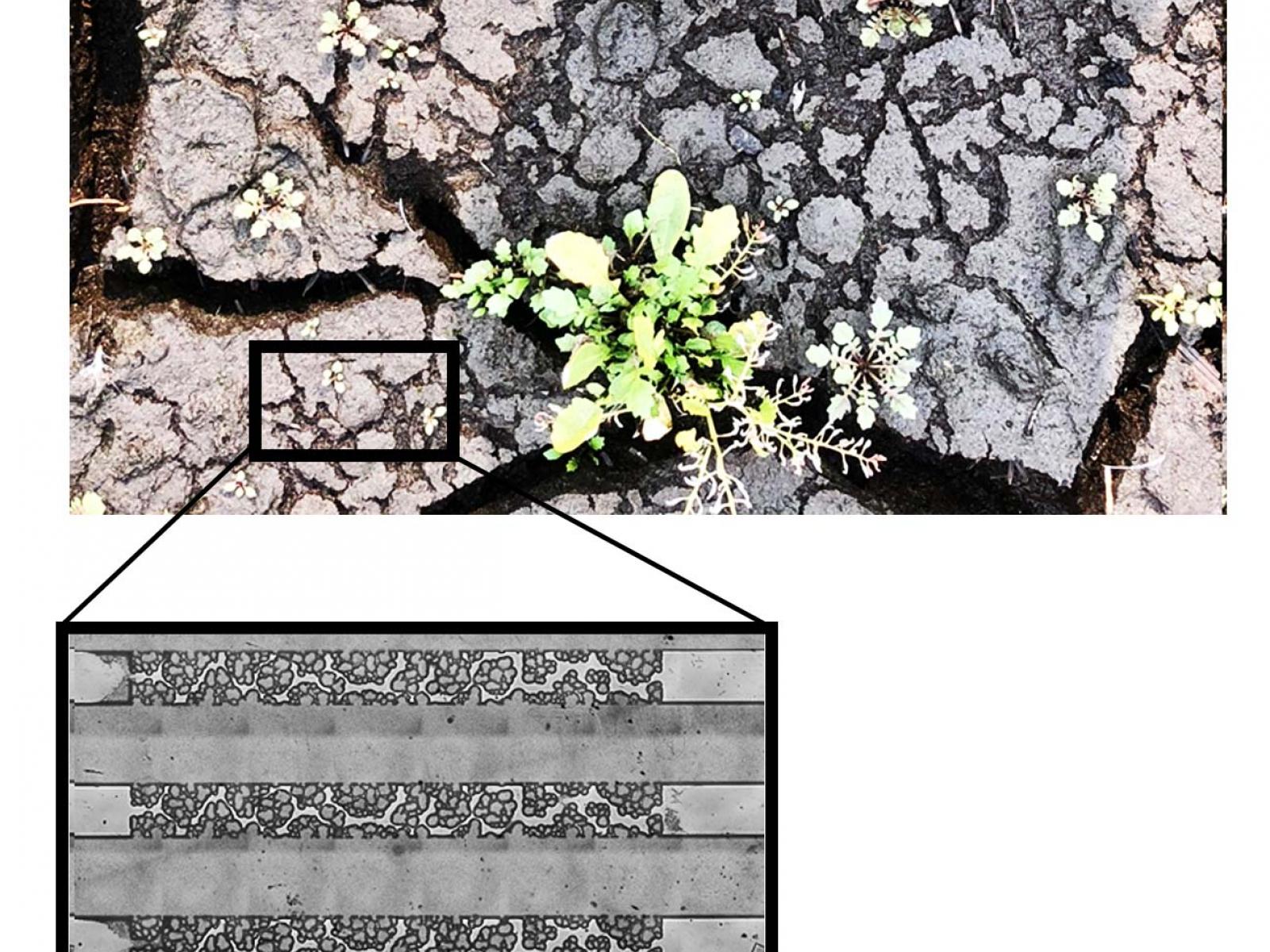Carbon Accessibility Influences Soil Microbiome Drought Resiliency
Soil microbial communities produced a higher amount of water retaining molecules when enriched with insoluble, compared to soluble, organic carbon

During drought, some soil microbes retain water by producing molecules that form hydrogel-like coatings.
Image courtesy of Chris Anderton and Arunima Bhattacharjee | PNNL
The Science
During drought, some soil microbes retain water by producing molecules that form hydrogel-like coatings. These molecules, collectively called extracellular polymeric substances or EPS, include long sugar chains, proteins, lipids, DNA, and surfactants. Now, a team of scientists, led by researchers from the U.S. Department of Energy’s Pacific Northwest National Laboratory (PNNL), used emulated soil microenvironments to study how the carbon substrate accessible to a soil microbial community affects the chemical composition of the EPS it produces. Communities enriched with an insoluble carbon substrate, a biopolymer called chitin, produced EPS with measurably better water retention properties in comparison to communities enriched with the soluble derivative of chitin, called N-acetylglucosamine.
The Impact
The resistance of a soil microbiome to drying confers survival advantages during drought. The observations from this study develop the foundational relationships between microbial community composition, accessibility of carbon substrates, EPS carbon chemistry, and drying resistance that can occur during drought.
Summary
The researchers sampled soil from an arid grassland with low organic matter content. Then they incubated the soil with either chitin, an abundant insoluble biopolymer in soil, or N-acetylglucosamine (NAG), the soluble building block of chitin. The researchers characterized the EPS produced in communities enriched with either substrate and they characterized the microbial community composition in each group. Finally, the researchers inoculated soil micromodels with EPS extracts from each microbial group and examined the effects on water retention.
The chitin-enriched communities generated EPS with a greater number of peptides and sugars known to be components of high-water retaining molecules compared to the NAG-enriched communities. Bacterial orders that are known to have members that produce high-water retaining EPS were significantly more abundant in chitin-enriched communities, whereas others were significantly more abundant in NAG-enriched cultures. The EPS extracted from chitin-enriched communities also led to better water retention properties in a soil micromodel compared to EPS extracted from the NAG-enriched communities. Taken together, these results suggest that the chemical properties of EPS produced by soil microbial communities are influenced by the solubility, and therefore accessibility, of the carbon substrates in their growth environment. Also, accessibility of carbon substrates influences the microbial community composition and the resulting EPS water retention properties.
Contacts
Christopher Anderton
Pacific Northwest National Laboratory
christopher.anderton@pnnl.gov
Arunima Bhattacharjee
Pacific Northwest National Laboratory
arunimab@pnnl.gov
Funding
This research was supported by the U.S. Department of Energy Biological and Environmental Research program and is a contribution of the scientific focus area “Phenotypic response of the soil microbiome to environmental perturbations.” A portion of the research was performed using the Environmental Molecular Sciences Laboratory, a U.S. Department of Energy Office of Science User Facility sponsored by the BER and located at Pacific Northwest National Laboratory. Some work was also supported by the National Science Foundation.
Published: October 29, 2020
A. Bhattacharjee, et al., “Soil microbial EPS resiliency is influenced by carbon source accessibility.” Soil Biology and Biochemistry 151, 108037 (2020). [DOI: 10.1016/j.soilbio.2020.108037]